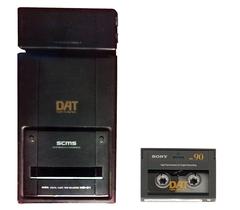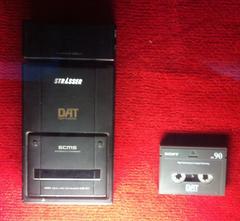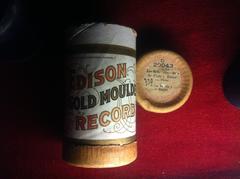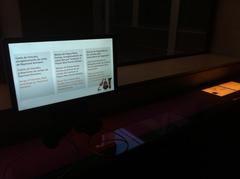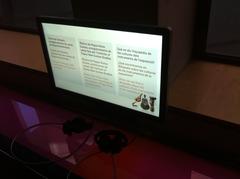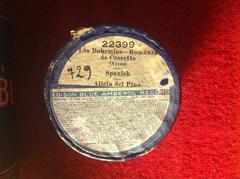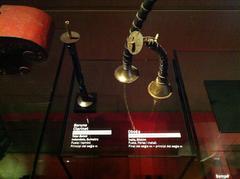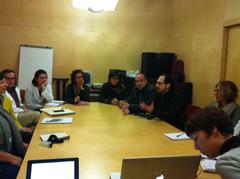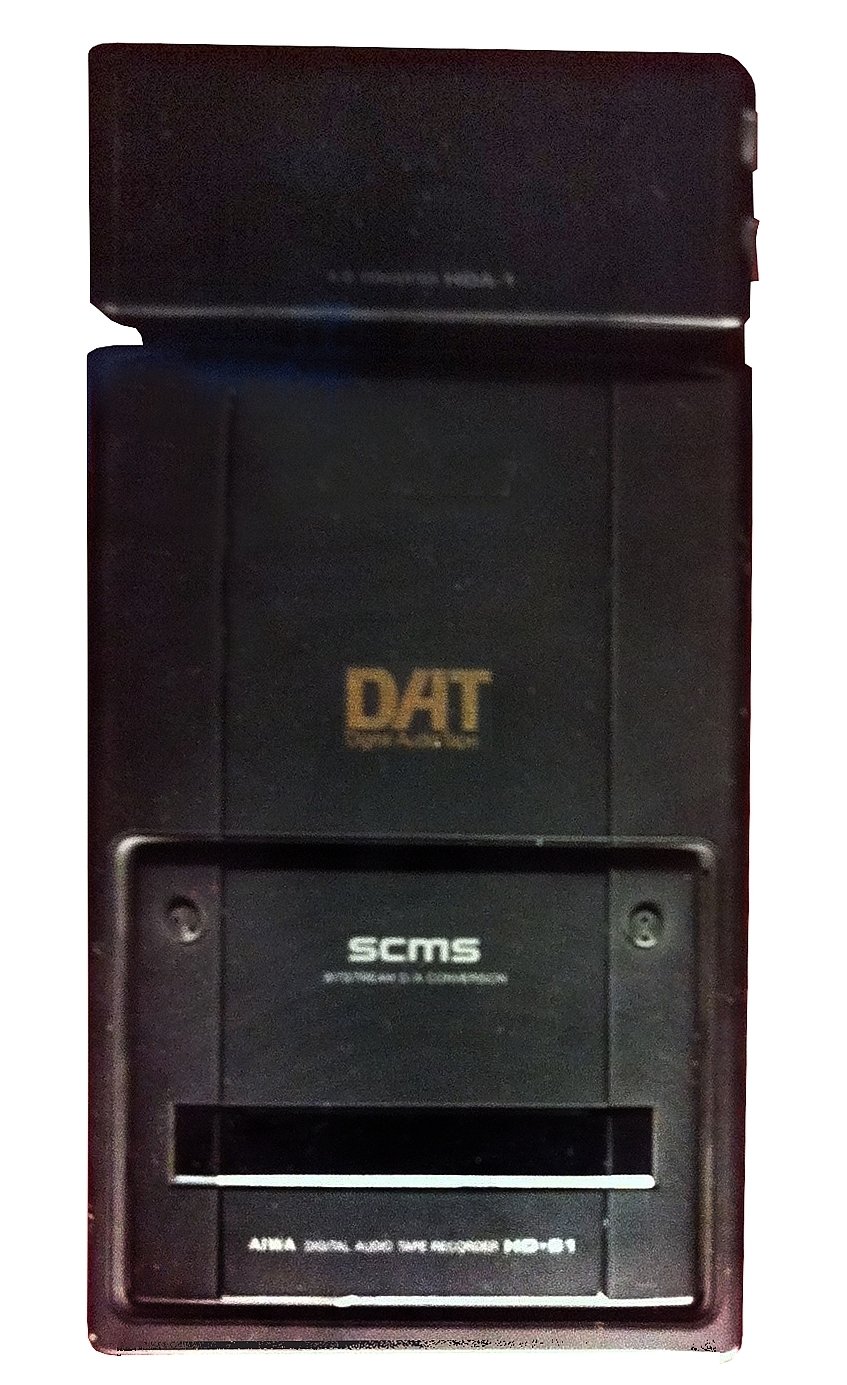
Museu de la Música de Barcelona: Comprehensive Visiting Guide, Hours, Tickets, and Cultural Insights
Date: 14/06/2025
Introduction: A Gateway to Musical Heritage
The Museu de la Música de Barcelona, set within the striking L’Auditori complex, is a premier destination for anyone eager to explore the world of music, its instruments, and history. Officially established in 1946 but with roots stretching back to early 20th-century cultural initiatives, the museum showcases over 2,000 instruments and an extensive archive of documents, offering a panoramic view of both Catalan and global musical traditions. Its dynamic exhibitions, interactive technologies, and educational programs make it a vibrant hub for music lovers, families, and curious travelers alike (ca.wikipedia; en.wikipedia; Museu de la Música Official Site).
Table of Contents
- History and Evolution
- Museum Collections and Highlights
- Visitor Information: Hours, Tickets, and Access
- Special Events, Tours, and Educational Activities
- Accessibility and Facilities
- Nearby Attractions and Travel Tips
- Frequently Asked Questions (FAQ)
- Conclusion & Further Resources
History and Evolution
Origins and Early Development
The museum’s inception dates back to 1921, when a group of Barcelona citizens proposed the creation of a space dedicated to theatre, music, and dance. This project led to the first collections and, by 1932, significant donations such as Orsina Baget de Folch’s antique instruments enriched its foundations (ca.wikipedia).
Interrupted Aspirations and Post-War Growth
Plans to house the collection in Montjuïc’s Palauet Albéniz were halted by the Spanish Civil War. The museum officially opened in 1946 at the Conservatori Superior de Música, with its collections displayed according to instrument families.
Expansion and Modernization
As the collection expanded—thanks to contributions from noted musicians and collectors—it moved in 1980 to the Palau del Baró de Quadras. A 1991 catalogue marked a milestone in organizing and classifying the museum’s holdings (ca.wikipedia).
The Move to L’Auditori
In 2007, the museum reopened in a purpose-built space within L’Auditori, integrating modern audiovisual technologies and a fresh museological vision. The permanent exhibition is organized into thematic and chronological sections, tracing the evolution of music from ancient times to the electronic age (en.wikipedia; barcelona.de).
Museum Collections and Highlights
Overview
With approximately 2,000 instruments and over 500 on display, the Museu de la Música de Barcelona houses one of Spain’s most diverse and acclaimed collections. The museum is celebrated for its guitar collection, rare ocarinas, and instruments from every continent (en.wikipedia; Museu de la Música).
Permanent Exhibition
- Ancient Instruments: Ocarinas over 2,000 years old, stringed and wind instruments from diverse cultures.
- European Classical Heritage: Grand Baroque organs, harpsichords, violins, and cellos by master luthiers.
- Catalan and Spanish Tradition: Guitars, bandurrias, and castanets, highlighting regional craftsmanship.
- Global Instruments: Pieces from Africa, Asia, and the Americas, showcasing music’s universality (Museu de la Música).
- Modern and Electronic Instruments: Electric guitars, synthesizers, and contemporary designs.
Interactive and Audiovisual Experiences
Visitors can listen to instruments via audio guides and dedicated stations, experiment with sound in interactive rooms, and explore thematic journeys through music’s evolution (Barcelona Bus Turístic).
Temporary Exhibitions
The museum regularly hosts rotating exhibitions and installations on themes such as sound art, musical memory, and global traditions. Recent examples include “Fragments d’un segon oblit” and “Ara canto per a mi” (Museu de la Música).
Visitor Information: Hours, Tickets, and Access
Location
- Address: Carrer de Lepant, 150, 08013 Barcelona (Eixample district, within L’Auditori)
- Metro: Tetuan (L2), Monumental (L2), Marina (L1)
- Nearby: Sagrada Família, National Theatre of Catalonia (barcelona.com)
Opening Hours
- Tuesday & Wednesday: 10:00 – 18:00
- Thursday: 10:00 – 21:00
- Friday–Sunday: 10:00 – 19:00
- Monday: Closed (except public holidays)
- First Sunday of the month: Free entry, 10:00 – 19:00
- Thursday evenings: Extended hours, free entry after 18:00
- Sunday afternoons from 15:00: Free entry
- Special holidays and closures: As per the official schedule (ajuntament.barcelona.cat)
Admission Fees
- General Admission: €6
- Reduced Admission: €4.50 (students, seniors, groups, etc.)
- Free Admission: Under 16s, first Sundays, Thursday evenings, and Sunday afternoons from 15:00
- Combined Tickets: Available for concerts at L’Auditori and other venues
Tickets can be purchased on-site or in advance online. The Barcelona Card offers discounts and public transport benefits (barcelona.com).
Special Events, Tours, and Educational Activities
Guided Tours
- Offered in Catalan, Spanish, English, and French (Italian and Russian upon request).
- Standard tours last 30 minutes, often include live music demonstrations.
- Group discounts and tailored programs for school visits (irbarcelona.org).
Concerts and Live Performances
Historic instruments are featured in regular concerts within L’Auditori. These events require separate tickets and advance reservations (visitmuseum.gencat.cat).
Workshops and Learning
- Family and children’s workshops
- Lectures, masterclasses, and community outreach
- Digital resources and virtual exhibitions (Google Arts & Culture)
Accessibility and Facilities
- Step-free access, elevators, accessible restrooms
- Audio guides and signage in multiple languages
- Cloakroom, lockers, gift shop, and library (by appointment)
- Café and comfortable seating available in L’Auditori
- Resources for visually impaired visitors available on request (barcelona-access.com)
Nearby Attractions and Travel Tips
- Combine Your Visit: Sagrada Família, National Theatre of Catalonia, Glòries district, and Eixample’s modernist landmarks are within walking distance.
- Best Visiting Times: Weekday mornings are quieter. Free entry periods are popular and may be busier.
- Photography: Non-flash photography is permitted in most areas; always check posted guidelines.
Frequently Asked Questions (FAQ)
Q: What are the exact visiting hours?
A: See the ‘Opening Hours’ section above for detailed times.
Q: How can I buy tickets?
A: Purchase online via the official website or at the entrance. Online booking is recommended during peak periods.
Q: Is the museum accessible for visitors with disabilities?
A: Yes, with full step-free access, elevators, and accessible facilities.
Q: Are audio guides and tours available?
A: Yes, in multiple languages; guided tours should be booked in advance.
Q: Is the museum suitable for families?
A: Absolutely. Interactive exhibits and workshops are designed for all ages.
Q: Are there concerts at the museum?
A: Yes, regular concerts are held in L’Auditori, often using the museum’s historical instruments.
Conclusion
The Museu de la Música de Barcelona is a dynamic institution at the crossroads of history, culture, and innovation. Its world-class collections, interactive experiences, and commitment to accessibility make it an essential stop for any Barcelona itinerary. Visitors are invited not just to observe, but to engage—whether through guided tours, live concerts, or hands-on workshops. With its central location, excellent visitor services, and rich programming, the museum stands as a vibrant testament to the universal language of music.
For the latest updates on hours, tickets, events, and educational offerings, consult the official website and Google Arts & Culture partner page. Download the Audiala app for exclusive guides and follow the museum’s social channels for news and events.
References
- Museu de la Música de Barcelona (ca.wikipedia)
- Museu de la Música de Barcelona (en.wikipedia)
- Museu de la Música Official Site
- Museu de la Música de Barcelona (visitmuseum.gencat.cat)
- Museu de la Música de Barcelona (barcelona.com)
- Barcelona Bus Turístic: Museu de la Música
- Google Arts & Culture: Museu de la Música de Barcelona

